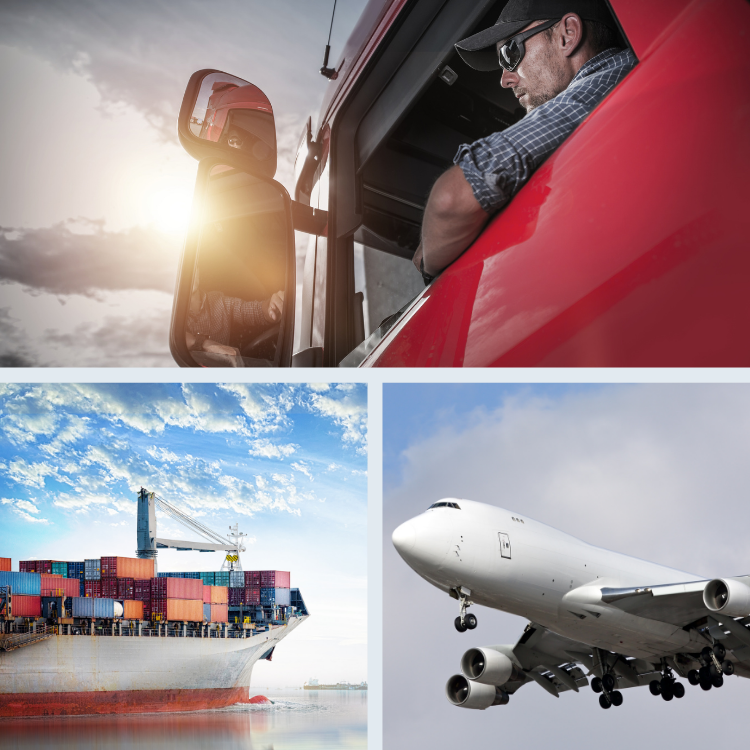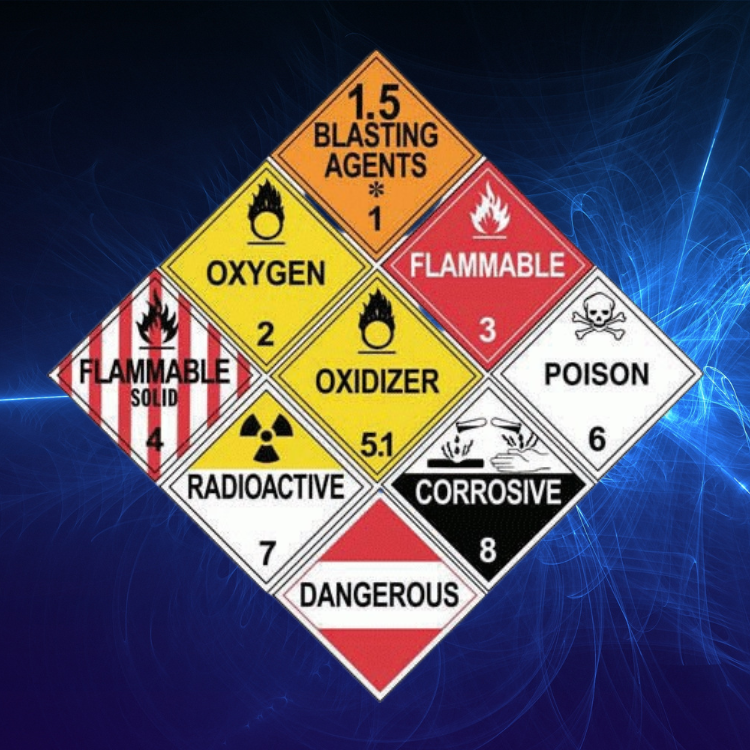Transportation Compliance Associates (TCA) offers Dangerous Goods Regulations (DGR) Training Certification for shipping by ground, air or sea. We can provide your training onsite at your facility or by a live private webinar. Prefer a computer-based approach? We do that too. Try our online training courses or let us develop and customize trainings for your Learning Management System (LMS). Our focus is on the dangerous goods you offer to transportation, and our trainings simplify the regulations to what you need to be both compliant and confident. Don’t have your own LMS? Then access your trainings and get your reports through ours!
IATA, IMDG, ADR and TDG Training


What is a Dangerous Good?
What are the 9 classes of dangerous goods?
Class 1 – Explosives
Class 2 – Gases
Class 3 – Flammable Liquids
Class 4 – Flammable Solids
Class 5 – Oxidizing Substances
Class 6 – Toxic & Infectious Substances
Class 7 – Radioactive
Class 8 – Corrosives
Class 9 – Miscellaneous Dangerous Goods

Types of Dangerous Goods Training
IATA (International Air Transport Association) / ICAO (International Civil Aviation Organization)
Shipping dangerous goods by air internationally.
DGR Section 1.5 – Training Requirements:
Personnel must be trained and tested in the regulations equivalent to their responsibilities and must be trained prior to performing those duties.
Training must include:
• General awareness
• Function specific
• Safety
Refresher training:
• Every 24 months
• Change in job assignment (new functions not included in prior training)
January 1, 2023 training changes:
• Competency-based approach to training and assessment
Training must be completed by:
• Operators
• Ground handling agencies which accept, handle, load, unload, transfer or process cargo, mail or stores
• Ground handling agencies which process passengers
• Agencies not located at the airport which check in passengers
• Freight forwarders
• Agencies which provide security or passenger, baggage, cargo, mail or stores screening
• Shippers and packers of dangerous goods
• Designated postal operators
IMDG (International Maritime Dangerous Goods) Code
Shipping dangerous goods by vessel internationally.
IMDG Code Section 1.3 – Training:
Persons engaged in dangerous goods for transport should have knowledge of the risks involved and must be trained to the level of their responsibilities.
Training is required for personnel who:
- Classify dangerous goods
- Identify proper shipping names
- Pack, mark, label or placard
- Load/unload Cargo Transport Units
- Prepare transport documents or loading/stowage plans
- Offer or accepts for transport
- Handles or carries in transport
- Loads into or unloads from ships
- Enforces, surveys, or inspects for compliance with applicable rules and regulations
- Are otherwise involved in the transport of dangerous goods as determined by the competent authority
Personnel who require IMDG Code training should be trained before assuming responsibilities and prior to receiving training only perform IMDG Code functions under the direct supervision of a trained person.
Required training:
- General awareness- general transport provisions
- Function specific- those provisions specific to one’s functions
- Refresher training- changes in regulations and practices
Training records:
- Must be maintained and retained by the employer
- Retention follows the employer’s competent authority requirement
- Must be made available to the employee or competent authority upon request
Safety training should be provided to personnel equivalent to their risk of exposure should a release occur and the functions they perform, and should include:
- Accidence avoidance methods and procedures, such as:
- Proper use of package-handling equipment
- Appropriate methods of dangerous goods stowage
- Available emergency response information
- General dangers associated with the classes of dangerous goods in their work environment and how to prevent exposure to the hazards
- Personal protective clothing and equipment
- Immediate procedures to followed should an unintentional release of dangerous goods occur including:
• Emergency response procedures for which an individual is responsible
• Personal protection procedures to be followed
ADR (European Agreement concerning the International Carriage of Dangerous Goods by Road)
Shipping dangerous goods by road in Europe.
ADR Manual Section 1.3 Training:
Persons whose duties affect the carriage of dangerous goods must be trained in the provisions that pertain to their responsibilities and duties.
- Employees must be trained before assuming duties and responsibilities
- Prior to receiving training, may perform related duties only under the direct supervision of a trained person
- Verified for new employees
- Refresher training is required according to the requirements of the competent authority
TDG (Transportation of Dangerous Goods)
Shipping dangerous goods by ground in Canada.
TDG Section 6.2 – Adequate training:
A person is adequately trained if the person has sound knowledge of the following topics that relate directly to the person’s duties and to the dangerous goods involved in those duties:
- Classification criteria and test methods
- Shipping names
- Schedules 1, 2, and 3
- Shipping documents and train consist requirements
- Dangerous goods safety marks
- Means of containment
- ERAP requirements
- Reporting requirements
- Safe handling and transportation practices; dangerous goods characteristics
- Proper use of equipment used to handle or transport dangerous goods
- Reasonable emergency measures to reduce or eliminate public danger
- Aspects of training for air (ICAO) and marine transport (IMDG)
Choose the perfect Training plan
Speak with a Dangerous Goods Expert Today
We are dedicated to providing high quality training to individual employees or large corporations alike. Determining the correct training courses and correct delivery method can be a daunting task. If you have any questions we are here to help and will continue to be available for the length of your certification.

